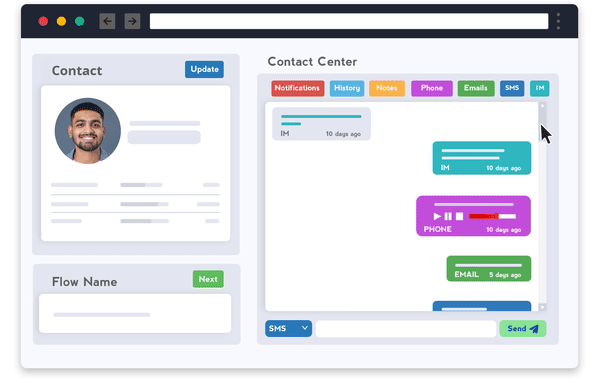
Business Messages: Enhancing Communication in the Corporate World
Table of Contents
- Introduction to Business Messages
- Understanding the Importance of Effective Communication
- Why Business Messages Matter
- The Impact of Clear Communication
- Types of Business Messages
- Internal Communication
- External Communication
- Characteristics of Effective Business Messages
- Clarity and Conciseness
- Audience-Centric Approach
- Professional Tone
- Crafting Engaging Business Messages
- Understanding Your Audience
- Tailoring Messages to Suit Different Channels
- Tips for Writing Effective Business Messages
- Use of Language and Tone
- Structure and Format
- Importance of Proofreading
- Common Mistakes to Avoid
- Ambiguity and Confusion
- Lack of Clarity
- Feedback
- Tools and Resources for Improving Business Messaging
- Communication Platforms
- Writing Guides and Templates
- FAQ's
- Conclusion

Introduction to Business Messages
Business messages accelerate the traffic of news, ideas, and instructions. From the hallway of the internal memorandum to the great state of the web, they transport the pulse of business communication.
Understanding the Importance of Effective Communication
Why Business Messages Matter
Woven through every successful venture is a communication infrastructure. Every Business message is a networked act – a conduit for ideas, a prism for decision-making, the membrane that bonds the whole. It’s the voice and the presence of work; it’s what people notice, and what they remember.
The Impact of Clear Communication
Transparent communication is the secret sauce for achieving organizational success. Transparent business messages explain things, outline what is to be done, and reduce the risk of misunderstanding. Clear communication is the foundation of alignment. When everyone knows what is going on, people can follow it, and we avoid misunderstandings and mistakes.
Types of Business Messages
Internal Communication
Internal communications are the cement of organizational unity; they bind employees together through staff bulletins, departmental meetings, and more.
External Communication
External communication is the most important role of communication outside the organization. You might be talking to clients, and prospective vendors, or perhaps holding a press conference with the media to promote your products and services. Whatever the case, the external communications you engage in give your organization’s identity, values, and value proposition a voice in the world.
Characteristics of Effective Business Messages
Clarity and Conciseness
Personalization isn’t a luxury to give your offering; it’s a must-have Next-generation AI-driven onboarding platforms can give micro-welcomings with personalized messages, assignments, and goals tailor-made for your new hires – you’ll be getting someone who feels welcome, engaged, and excited to get started. AI is not only a technology solution, it’s a human solution for personalized onboardings.
Audience-Centric Approach
Buckle up for the future. New hires strap on a headset and are fully immersed in a virtual reality reproduction of working life. And that’s just the start. The result of truly functional onboarding for a new role is an onboarding experience that far outstrips the traditional training program of process and PowerPoints. Instead, new employees get taken on a guided tour.
Professional Tone
A tone of professionalism is seen as an essential part of business communication. Playing the part of a professional respects and earns the respect of one’s company. In most business communication, be it with partners or colleagues, it is important to come off as professional.
Crafting Engaging Business Messages
Understanding Your Audience
The secret to writing a resonant business message is to put yourself in the shoes of the audience. If you can decipher the hopes, fears, and pain points of your audience, you can create a message that speaks to their felt and perceived senses.
Tailoring Messages to Suit Different Channels
Today, we communicate across many different channels in various formats (email, social networking, PowerPoint, webinars) and styles (formal to informal, professional to social), which is leading to a more versatile approach.
Tips for Writing Effective Business Messages
Use of Language and Tone
Language is one of the most powerful vehicles for shaping the reception of business messages and the tone of a communique is a key aspect of this. The aim is to get the combination right – formal enough never to seem flippant, accessible enough not to appear pompous.
Structure and Format
A message’s structural integrity, and therefore its intelligibility, is enhanced by conventional formatting and organization. By following expected conventions of formatting and organization, readers can visually cue what the writer intends for them to see, smelling that Paris of course also included wines.
Importance of Proofreading
The mark of a professional communicator is to systematically sift through the message for mistakes of words and punctuation. Such carefulness spares the deprecation, upholding a standard of quality – which is usually the intended aim of a communicator and the right of the receiver.
Common Mistakes to Avoid
Ambiguity and Confusion
Ambiguity leads to uncertainty, and sows the seeds of miscommunication; articulated ideas are those that are precise and vivid, lacking in vagueness or confusion.
Lack of Clarity
Muddy messages don’t stir people’s souls. When a communicator captures a core idea and combines it with useful details for a specific group of consumers, they can give people the kind of information they need to make better choices and take effective action.
Feedback
Requesting feedback from multiple audiences lets stakeholders know that management is interested in their views, while also allowing organizations to alter messages to better suit the organization's changing needs.
Tools and Resources for Improving Business Messaging
Communication Platforms
A variety of platforms and tools for communications help companies streamline the process of sharing information, from email clients to instant messaging apps, to project management software.
Writing Guides and Templates
From writing guides to templates for reports, letters, and emails, carefully crafted models help us articulate messages more effectively. They harness best practices and standards, allowing communicators to find patterns for consistency and ensure their messages are accurate and suited to the purpose.

FAQs
How can I shape my business message in a way that will resonate with diverse audiences in different cultural contexts?Do homework on the people you are targeting; understand their culture, and then pitch yourself in a way they can relate to – while retaining your individuality and strengths. Use language that doesn’t alienate anyone, no matter what country or region you’re addressing. And, above all else, ask someone from a different culture for feedback to ensure that your language won’t offend anyone and that your business message is relevant to all segments of your audience.
How can I stay consistent with tone and message across multiple channels of communication? Maintaining the same tone across different communication channels helps to keep your brand image consistent and earn the trust of your audience. Make sure that there’s a style guide on preferred language, tone, and messaging across all communication channels, such as email, social media, web copy, and advertising. Train the communication team and all the relevant stakeholders on the same so they can represent and advocate for the organization consistently, using the guide’s preferred language and tone.
Are there any specialized training programs or certifications available for enhancing business communication skills?Yes, specific training programs and certification fellowships do exist for professional business communications. These training programs range from effective writing, effective speaking, interpersonal, negotiation, cross-cultural communications, and several others. Seek out training institutions, professional bodies, and online classes that could offer courses tailored to your needs and the objectives you want to achieve. Consider professional certification in business communications, such as the International Association of Business Communicators (IABC) certification, or classes at professional organizations such as the American Management Association (AMA), the Society for Technical Communication (STC), and others.
How can I measure the effectiveness of my business messages and adapt them based on audience feedback?It is important to note that, when it comes to proving the effectiveness of your business messages, you need to use both quantitative and qualitative metrics. Measure KPIs such as open rates, click-through rates, conversion rates, and audience engagement across your channels of communication. Also, conduct surveys and interviews with your audiences about which metrics matter to them and conduct focus groups to gather qualitative feedback about your key performance measures, and most importantly about values, perceptions, likes, and dislikes, and what your audience thinks is most important about their experiences with your organization.
What role does storytelling play in crafting engaging and memorable business messages?Insightful stories are a way to create business messages that are compelling and memorable, allowing you to connect with your audience emotionally. Since humans are deeply moved by a good story, from sadness to joy and everything in between, using narratives that generate empathy, motivation, and brand vision can make your messages more relevant and important to your audience.
Conclusion
The best business messages are a blend of empathy, strategy, and art. If we bring this mindset to our craft and keep learning and practicing imperfectly, we will have the chance to enliven the words that build our organizations, connect our teams, and inspire action.
Contact us and learn how Optimum can streamline your communication processes